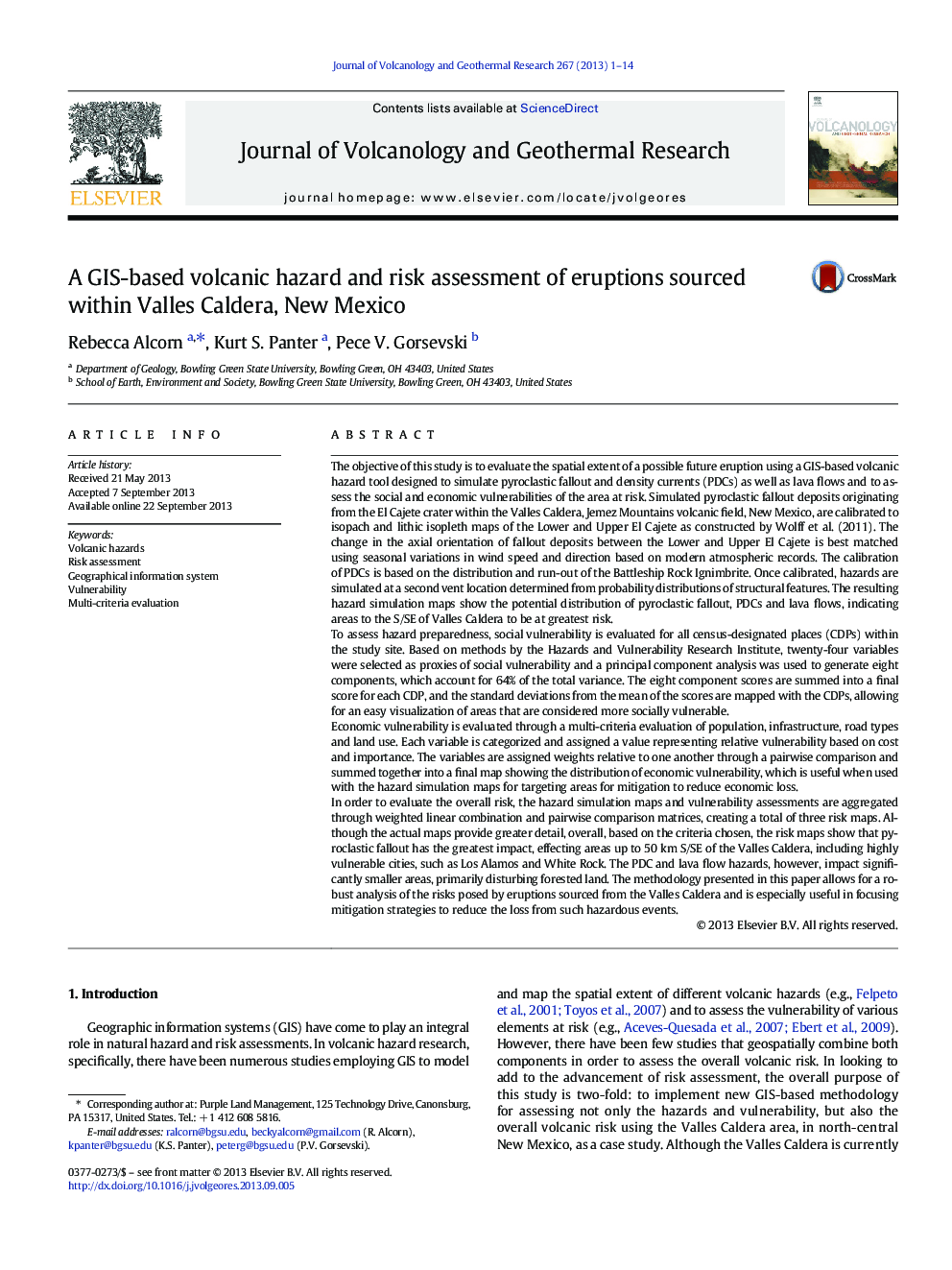| کد مقاله | کد نشریه | سال انتشار | مقاله انگلیسی | نسخه تمام متن |
|---|---|---|---|---|
| 4713299 | 1638354 | 2013 | 14 صفحه PDF | دانلود رایگان |

• We present a GIS-based multi-criteria analysis of volcanic hazards and socioeconomic vulnerability to assess risk.
• Models show that hazards are primarily from pyroclastic fallout directed S/SE of the caldera and PDCs channeled SW.
• The study provides a versatile methodology for assessment of risk and foundation for risk management.
The objective of this study is to evaluate the spatial extent of a possible future eruption using a GIS-based volcanic hazard tool designed to simulate pyroclastic fallout and density currents (PDCs) as well as lava flows and to assess the social and economic vulnerabilities of the area at risk. Simulated pyroclastic fallout deposits originating from the El Cajete crater within the Valles Caldera, Jemez Mountains volcanic field, New Mexico, are calibrated to isopach and lithic isopleth maps of the Lower and Upper El Cajete as constructed by Wolff et al. (2011). The change in the axial orientation of fallout deposits between the Lower and Upper El Cajete is best matched using seasonal variations in wind speed and direction based on modern atmospheric records. The calibration of PDCs is based on the distribution and run-out of the Battleship Rock Ignimbrite. Once calibrated, hazards are simulated at a second vent location determined from probability distributions of structural features. The resulting hazard simulation maps show the potential distribution of pyroclastic fallout, PDCs and lava flows, indicating areas to the S/SE of Valles Caldera to be at greatest risk.To assess hazard preparedness, social vulnerability is evaluated for all census-designated places (CDPs) within the study site. Based on methods by the Hazards and Vulnerability Research Institute, twenty-four variables were selected as proxies of social vulnerability and a principal component analysis was used to generate eight components, which account for 64% of the total variance. The eight component scores are summed into a final score for each CDP, and the standard deviations from the mean of the scores are mapped with the CDPs, allowing for an easy visualization of areas that are considered more socially vulnerable.Economic vulnerability is evaluated through a multi-criteria evaluation of population, infrastructure, road types and land use. Each variable is categorized and assigned a value representing relative vulnerability based on cost and importance. The variables are assigned weights relative to one another through a pairwise comparison and summed together into a final map showing the distribution of economic vulnerability, which is useful when used with the hazard simulation maps for targeting areas for mitigation to reduce economic loss.In order to evaluate the overall risk, the hazard simulation maps and vulnerability assessments are aggregated through weighted linear combination and pairwise comparison matrices, creating a total of three risk maps. Although the actual maps provide greater detail, overall, based on the criteria chosen, the risk maps show that pyroclastic fallout has the greatest impact, effecting areas up to 50 km S/SE of the Valles Caldera, including highly vulnerable cities, such as Los Alamos and White Rock. The PDC and lava flow hazards, however, impact significantly smaller areas, primarily disturbing forested land. The methodology presented in this paper allows for a robust analysis of the risks posed by eruptions sourced from the Valles Caldera and is especially useful in focusing mitigation strategies to reduce the loss from such hazardous events.
Journal: Journal of Volcanology and Geothermal Research - Volume 267, 1 November 2013, Pages 1–14